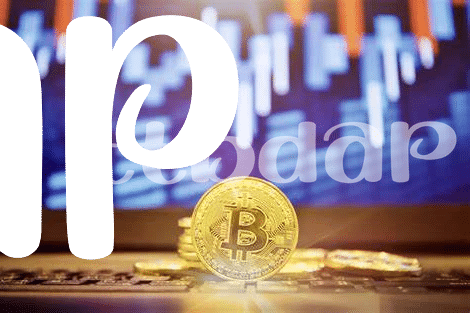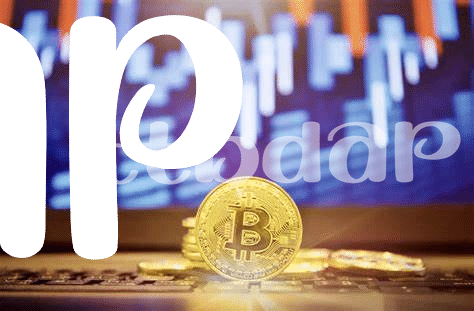Unraveling the Mystery: What Is Blockchain? 🧐

Blockchain technology is like a digital ledger, but much smarter than your typical notebook. Imagine you have a diary that’s copied and shared among friends—your transactions, like sending or receiving digital money, are pages in this diary. Every time a transaction happens, everyone’s diary gets a new page. This ensures that no single person can mess with the records, since changing one page in one diary would mean having to change all the diaries at the same time, which is virtually impossible. Plus, these diaries are spread far and wide, making it even harder for sneaky individuals to do any tampering.
It’s not just about keeping records; it’s the trust that comes with it. With blockchain, everyone can see the transactions, but they can’t see who’s making them, keeping things anonymous yet transparent. It’s like having a magic diary that everyone believes but can’t see who’s writing in it. Its uses go beyond digital currencies, finding a place in various industries such as healthcare and finance, thanks to its iron-clad security and transparency.
| Term | Explanation |
|---|---|
| Blockchain | A digital ledger that records transactions across many computers |
| Transaction | An action like sending or receiving digital currency, recorded in the blockchain |
| Decentralization | Distribution of the digital ledgers across a network, ensuring no single point of failure |
The Bedrock of Bitcoin: Understanding Security 🛡️
At the heart of Bitcoin lies its security, a fundamental feature that ensures users’ trust and confidence in this digital currency system. Imagine a super secure vault, but instead of being in a single location, it’s spread out across millions of computers around the world. This is essentially what blockchain technology does for Bitcoin. By distributing its operations across a vast network, Bitcoin harnesses collective vigilance, making it incredibly difficult for hackers to cause mischief. Every transaction is meticulously recorded, like entries in a tamper-proof ledger, offering transparency and reliability. Furthermore, for an in-depth exploration of how Bitcoin scales security measures beyond the blockchain, such as through innovative solutions like state channels, the resource at https://wikicrypto.news/state-channels-boosting-bitcoin-transactions-beyond-the-blockchain sheds light on evolving security strategies. This decentralized architecture doesn’t just protect against unauthorized access; it also lays the framework for a future where digital trust is paramount, setting a high bar for security in the digital age.
How Does Blockchain Prevent Unauthorized Access? 🔒

Imagine a world where every time someone tried to sneak a peek at your secret diary, a hundred locks would instantly appear, each needing a different key. That’s a bit like how blockchain keeps Bitcoin safe from unwanted eyes. Every piece of information, or “block,” is like a page in your diary, protected by a complex math problem that only the right key, or “cryptographic hash,” can solve. But here’s the clever part: every block is linked to the one before it. So, to mess with one, a hacker would need to solve all those puzzles backward, a task so Herculean it’s nearly impossible.
🔐 Furthermore, imagine if your diary’s pages were scattered in different locations around the world, making it even harder for snoopers to piece it all together. This is blockchain’s decentralization magic in action. By not having one single point of failure, it’s like a treasure hunt without a map. Even if a hacker were to crack one code, they’d only have a tiny piece of the puzzle. 🌍🔑 This blend of cryptography and decentralization forms a nearly impenetrable shield, securing Bitcoin from unauthorized access and making digital transactions safer for everyone.
Diving into Decentralization: Security’s Secret Sauce 🌐

Imagine a world where your personal info is safe and sound, not locked away in a single treasure chest but spread out like pieces of a puzzle across a vast network. That’s what decentralization in blockchain is all about. It’s like having countless copies of your precious info, making it super tough for any sneaky folks to mess with it. This magic happens because every piece of the puzzle has to agree before any changes are made, ensuring top-notch security without having to rely on a single point of control. While it might sound complex, it’s this very sprinkling of information that acts as the secret sauce keeping blockchains like Bitcoin secure. For folks wondering how all this ties into their digital security, especially when dealing with bitcoin wallet types security concerns, decentralization means that rather than putting all their digital eggs in one basket, their info is safely scattered across the globe, shielded by the collective vigilance of the blockchain network. It’s a brave new world of security, and we’re just beginning to explore its depths.
Handling Threats: Blockchain’s Defense Mechanisms 🛡️
Imagine a castle with layers upon layers of defense mechanisms, from tall walls and moats to guards at every entrance. This is akin to how blockchain technology protects information, making it a stronghold against various threats. Essentially, it employs a mix of clever techniques to ensure that the data it houses remains untampered with and secure. Firstly, it uses what’s known as cryptographic hashing, a tool that transforms any input (like a transaction) into a fixed string of letters and numbers. This means even a tiny change in the transaction creates a totally different hash, signaling tampering. Furthermore, the blockchain is a team sport; it relies on a network of computers, each keeping a copy of the entire chain. This distributed ledger means if one piece is attacked, the system can refer to the countless other copies to correct any discrepancies. Lastly, it uses consensus models – rules that all participants agree to – to validate new blocks. These models, like Proof of Work or Proof of Stake, require participants to prove their commitment to the network, making it costly and difficult for attackers to manipulate.
Here’s a simple table showcasing these mechanisms and how they protect the blockchain:
| Mechanism | Description | Role in Security |
|---|---|---|
| Cryptographic Hashing | Transforms transactions into a string of letters and numbers. | Ensures any tampering is easily detected. |
| Distributed Ledger | A network of computers each holding a copy of the blockchain. | Makes information tampering difficult as multiple sources verify data integrity. |
| Consensus Models | Rules for validation of new blocks (e.g., Proof of Work, Proof of Stake). | Adds an extra layer of security by requiring commitment from network participants. |
In essence, the blockchain is built to withstand a barrage of threats through these interconnected security measures, nurturing a secure environment where data can thrive untouched by unauthorized hands.
The Future of Blockchain Security: What’s Next? 🔮

As we gaze into the crystal ball of blockchain’s future, we can expect an evolution that not only tightens its security features but also expands its horizons to include more user-friendly and accessible technologies for the average Joe. Picture this: a world where your digital identity and assets are as secure as Fort Knox, thanks to continually advancing blockchain technology. One of the most exciting developments on the horizon is the leap towards solving bitcoin scalability solutions security concerns, making transactions faster and more secure, and in turn, fostering the growth of bitcoin for charitable causes and savvy investing. Furthermore, innovations in quantum computing pose both a challenge and an opportunity for blockchain security, promising to turn today’s security protocols into tomorrow’s history lessons. Stay tuned 🌟, because the future is bright 🔍, and blockchain security is stepping up, ready to tackle whatever comes next with agility and unparalleled strength.
